
Colloid and Interface Science Communications
Scope & Guideline
Connecting Innovators in Surface and Materials Chemistry
Introduction
Aims and Scopes
- Colloidal Chemistry:
Research in this area includes the synthesis, stabilization, and characterization of colloidal systems, such as nanoparticles, emulsions, and foams, focusing on their stability and interactions. - Nanotechnology and Nanomaterials:
The journal covers the development of nanostructures and nanocomposites, exploring their unique properties and functionalities for applications in various fields like medicine, energy, and environmental science. - Surface and Interface Science:
Studies on surface and interfacial phenomena, including adsorption, wetting, and surface modification techniques, are central to the journal's scope, with a focus on how these properties affect material performance. - Biomedical Applications:
Research exploring the use of colloidal materials in drug delivery, diagnostics, and therapeutic applications, highlighting the intersection of colloid science and life sciences. - Environmental Applications:
The journal addresses the role of colloidal systems in environmental remediation, including the removal of pollutants and heavy metals from water, showcasing colloid science's impact on sustainability. - Theoretical and Computational Studies:
Theoretical models and simulations that enhance the understanding of colloidal interactions and dynamics, aiding the design of new materials and processes.
Trending and Emerging
- Sustainable and Green Chemistry:
There is a growing emphasis on sustainable practices in nanomaterial synthesis and application, including eco-friendly methods for producing nanoparticles and adsorbents. - Nanoparticle-Based Therapeutics:
Increasing interest in the development of nanoparticle-based systems for targeted drug delivery and cancer therapy, reflecting the journal's alignment with advancements in biomedical applications. - Smart and Responsive Materials:
Research on materials that respond dynamically to environmental stimuli, such as pH or temperature, is gaining momentum, particularly for applications in drug delivery and environmental remediation. - Photocatalysis and Environmental Remediation:
Emerging trends show a significant focus on photocatalytic materials for pollutant degradation and wastewater treatment, highlighting the role of colloids in addressing environmental challenges. - Self-Healing and Anti-Fouling Coatings:
Innovative research on coatings that exhibit self-healing properties or resist biofouling is on the rise, indicating a shift towards functional materials with advanced surface properties. - Machine Learning and AI in Colloid Science:
The integration of artificial intelligence and machine learning techniques for predicting colloidal behavior and optimizing material properties is becoming increasingly relevant.
Declining or Waning
- Traditional Surface Chemistry:
While surface chemistry remains a core area, studies focused solely on classical surface chemistry principles without integration of nanotechnology have seen reduced publication rates. - Macroscopic Material Properties:
Research centered on bulk material properties without a colloidal or nanoscale perspective has become less prominent, as the trend shifts towards nanoscale interactions and behaviors. - Conventional Drug Delivery Systems:
The frequency of papers discussing traditional drug delivery methods has decreased as innovative, nanotechnology-based approaches gain more attention and relevance. - Fundamental Theoretical Studies:
While theoretical studies are vital, the focus has shifted towards applied research with practical implications, leading to a reduction in purely theoretical contributions.
Similar Journals
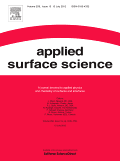
APPLIED SURFACE SCIENCE
Connecting Theory and Application in Surface ScienceApplied Surface Science is a premier international journal published by Elsevier, focusing on the critical advancements in surface and interface science since its inception in 1984. With an impressive impact factor that places it in the Q1 category across multiple disciplines such as chemistry, condensed matter physics, and materials science, this journal serves as an essential platform for researchers and professionals eager to disseminate their findings and explore innovative applications within the realm of surfaces, coatings, and films. The journal's scope includes, but is not limited to, the study of surface modification, nanostructuring, and the fabrication of advanced materials, making it pivotal for those seeking to push the boundaries of applied sciences. It rates highly in Scopus rankings, standing at Rank #22 in condensed matter physics, Rank #5 in surfaces and interfaces, and Rank #13 in surfaces, coatings, and films, underscoring its vital contribution to the scientific community. While open access options are not available, the journal remains a significant resource for academics and industry experts alike, fostering a deeper understanding of surface phenomena and their applications in various technological fields.

Protection of Metals and Physical Chemistry of Surfaces
Unveiling the Chemistry Behind Metal ProtectionProtection of Metals and Physical Chemistry of Surfaces is a prominent academic journal published by MAIK NAUKA/INTERPERIODICA/SPRINGER, which provides a specialized platform for researchers and professionals in the fields of materials chemistry, metals and alloys, organic chemistry, as well as surfaces, coatings, and films. With an ISSN of 2070-2051 and an E-ISSN of 2070-206X, the journal is recognized for its rigorous peer-reviewed content and comprehensive coverage of innovative research addressing the latest advancements in material protection and surface chemistry. As of 2023, the journal has been categorized in the Q3 quartile across several relevant fields, highlighting its increasing influence within the scientific community. Although the journal is relatively niche, its open access model encourages wide dissemination of knowledge, fostering collaboration and advancements within its core disciplines. Research published in this journal plays a crucial role in not only enhancing theoretical understanding but also facilitating practical applications in various industries, thereby underlining its importance for students, researchers, and professionals alike.
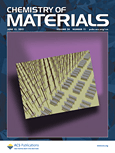
CHEMISTRY OF MATERIALS
Leading the Charge in Chemical InnovationsChemistry of Materials, published by the American Chemical Society, stands at the forefront of innovative research in the disciplines of chemical engineering, materials science, and chemistry. With an impressive impact factor, this esteemed journal is recognized globally, having achieved Q1 rankings in three significant categories for 2023: Chemical Engineering, Materials Chemistry, and General Chemistry. This positions the journal in the top tier of academic publications, reflecting its influence and rigor in advancing the field. Since its inception in 1989, Chemistry of Materials has been a platform for groundbreaking studies, contributing essential insights and discoveries that shape modern materials science. While currently not an open-access journal, it remains an invaluable resource for researchers, professionals, and students seeking to explore cutting-edge materials research and applications. Its well-curated collection of articles underscores the journal's commitment to enhancing understanding and promoting innovations in material chemistry and its associated fields.
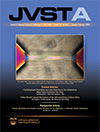
JOURNAL OF VACUUM SCIENCE & TECHNOLOGY A
Unveiling Breakthroughs in Coatings and Films.JOURNAL OF VACUUM SCIENCE & TECHNOLOGY A, published by the esteemed American Institute of Physics, is a leading journal in the field of materials science and applied physics, with an ISSN of 0734-2101 and an E-ISSN of 1520-8559. This publication serves as a vital platform for researchers and professionals focused on condensed matter physics, surfaces and interfaces, as well as coatings and films, contributing significantly to our understanding of vacuum technology and its applications. With a commendable Q2 ranking in key categories such as Condensed Matter Physics and Surfaces and Interfaces, the journal showcases rigorous research that pushes the boundaries of science and technology. The journal is particularly noted for its impact within the community, holding impressive Scopus rankings that highlight its relevance and influence. Although not an Open Access journal, it remains a crucial resource for academics seeking high-quality, peer-reviewed articles from 1970 through 2024. We invite you to explore the latest advancements and innovative findings that this journal presents, positioning you at the forefront of research in vacuum science.

APPLIED PHYSICS A-MATERIALS SCIENCE & PROCESSING
Bridging Physics and Engineering for a Sustainable FutureApplied Physics A: Materials Science & Processing, published by Springer Heidelberg, is an esteemed academic journal that has been at the forefront of innovative research since its establishment in 1995. With a strong focus on the intersection of physics, materials science, and engineering, this journal explores cutting-edge developments and applications that influence contemporary materials research. Categorized in the Q2 quartile across both Chemistry and Materials Science, it boasts respectable rankings in Scopus, affirming its influence and reach within the academic community. Although primarily a subscription-based journal, it is dedicated to disseminating high-quality research findings that advance our understanding in these fields. Researchers, professionals, and students alike can benefit from the journal's commitment to publishing comprehensive studies, methodological advancements, and insightful reviews that push the boundaries of knowledge in materials science.

Small Methods
Innovating methodologies that make a big impact in small ways.Small Methods, published by WILEY-V C H VERLAG GMBH, is an esteemed peer-reviewed journal dedicated to advancing the fields of Chemistry and Materials Science. With a 2023 impact factor placing it in the Q1 category of both disciplines, and impressive Scopus rankings (27th in Materials Science and Chemistry), this journal serves as a vital platform for researchers and professionals alike to disseminate their innovative methodologies and pioneering experiments. Spanning a wide array of topics from nanotechnology to polymer science, Small Methods encourages the submission of high-quality research that illustrates novel small-scale methods applicable in various scientific contexts. Despite its absence of Open Access options, the journal is highly regarded for its rigorous editorial standards and comprehensive peer-review process, making it indispensable for students and academics aiming to stay at the forefront of these dynamic fields. With convergence years from 2017 to 2024, Small Methods continues to define the intersection of methodological innovation and practical application in both chemistry and material sciences.
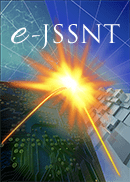
e-Journal of Surface Science and Nanotechnology
Pioneering Discoveries in Surface ScienceThe e-Journal of Surface Science and Nanotechnology, published by the SURFACE SCI SOC JAPAN, stands as a pivotal platform for the dissemination of groundbreaking research in the fields of surface science and nanotechnology. With an ISSN of 1348-0391 and a commitment to open access publication since 2003, this journal ensures that innovative findings are accessible to a global audience, fostering collaboration among researchers, professionals, and students. The journal spans a wide array of disciplines, as evidenced by its 2023 category quartiles, which include Q3 rankings in Biotechnology and Mechanics of Materials, as well as Q4 standings in Bioengineering, Condensed Matter Physics, and various surface-related fields. This diverse scope makes it an essential resource for those engaged in advanced scientific research and applications. The journal’s unique position within its categories—Ranging from Q3 to Q4 in various Scopus rankings—highlights its niche yet vital contribution to advancing knowledge in both fundamental and applied sciences. By continually converging from 2005 to 2024, the e-Journal of Surface Science and Nanotechnology embodies the integration of innovative studies and novel applications that drive the future of material sciences.

Journal of Nanoanalysis
Transforming Research into Practical Nanotechnology SolutionsThe Journal of Nanoanalysis is a leading publication in the field of nanotechnology, dedicated to advancing the understanding and application of nanoscale analysis methodologies. Published by BORNA SANJESH KIMIA CO-BSK CO, this journal aims to provide a comprehensive platform for researchers, professionals, and students to disseminate cutting-edge findings and innovative approaches in nanomaterials characterization, nanoelectronics, and related areas. With a focus on high-quality peer-reviewed articles, the journal supports the global scientific community in fostering interdisciplinary collaboration and knowledge sharing. Although currently lacking an explicit impact factor, the Journal of Nanoanalysis is poised to make significant contributions to the field, with its commitment to open access and accessibility globally enriching the pool of research available for academic and practical advancements.
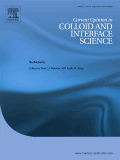
CURRENT OPINION IN COLLOID & INTERFACE SCIENCE
Fostering Collaboration in Colloid and Surface ChemistryCURRENT OPINION IN COLLOID & INTERFACE SCIENCE, published by Elsevier Science London, serves as a premier platform for researchers and professionals in the field of colloid, interface science, and related disciplines. With an impressive Q1 ranking in multiple categories including Colloid and Surface Chemistry, Physical and Theoretical Chemistry, Polymers and Plastics, as well as Surfaces and Interfaces, this journal showcases cutting-edge developments and expert opinions that drive innovation in these areas. As a leader in its field, it maintains robust academic standards, reflected in its high percentile rankings across various Scopus categories, such as 3rd in Surfaces and Interfaces and 10th in Physical and Theoretical Chemistry. While the journal is not Open Access, it provides valuable insights to a wide audience, making it an essential resource for advancing knowledge and fostering collaborations among researchers, academics, and industry professionals alike. With a continual publication timeline extending from 1996 to 2024, it captures the evolving landscape of colloid and interface science, ensuring that readers are equipped with the latest findings and perspectives.
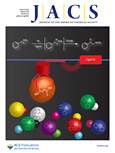
Journal of the American Chemical Society
Pioneering Research in Modern ChemistryJournal of the American Chemical Society (JACS), published by the American Chemical Society, stands as a pivotal publication in the field of chemistry, facilitating the dissemination of significant research findings since its inception in 1879. With an impressive impact factor and esteemed rankings placing it in the Q1 quartile across various categories—including Biochemistry, Catalysis, and Colloid and Surface Chemistry—JACS continues to serve as a vital resource for scientists, professionals, and students alike. Researchers choose JACS for its rigorous peer-review process, ensuring high-quality content that shapes the landscape of modern chemistry. The journal's extensive scope encompasses pivotal advancements and innovative methodologies, reflecting the evolving dynamics of chemical research. With access options being traditional subscription-based, it remains crucial for institutions and individuals to engage with its latest issues to stay at the forefront of chemical science advancement.